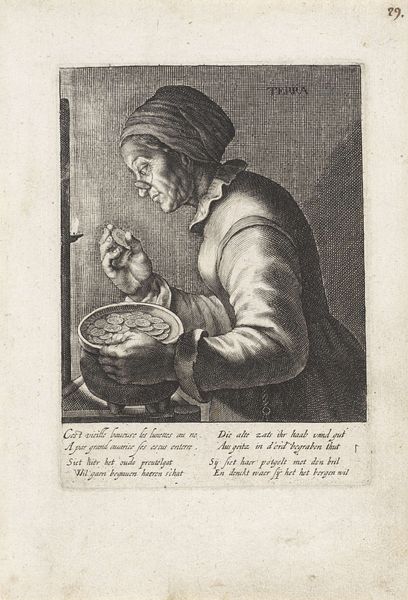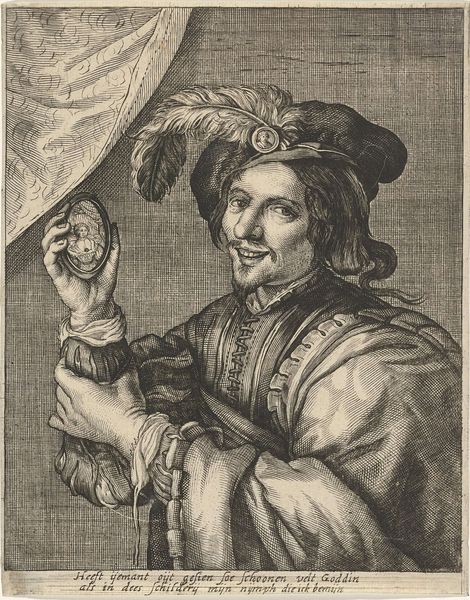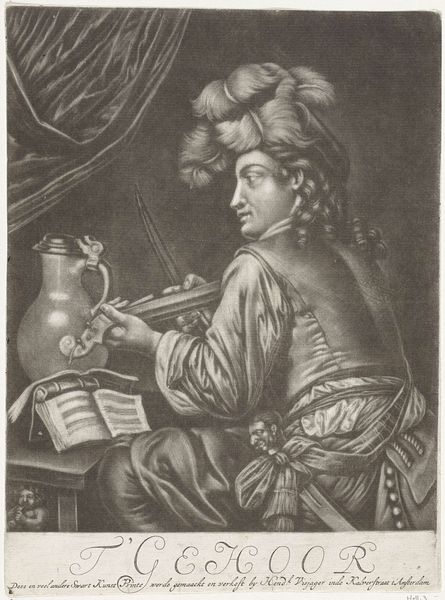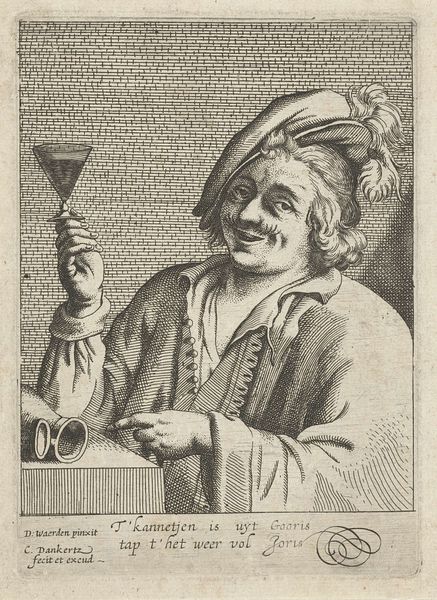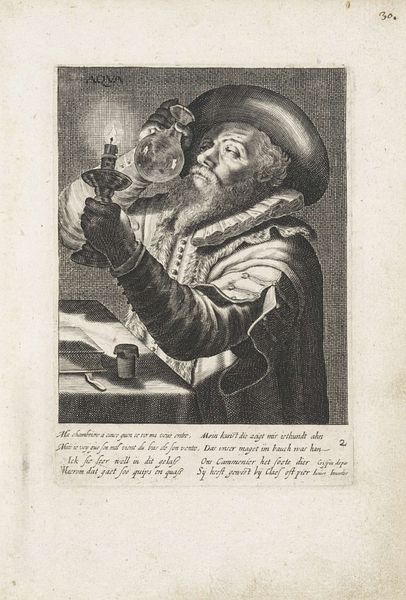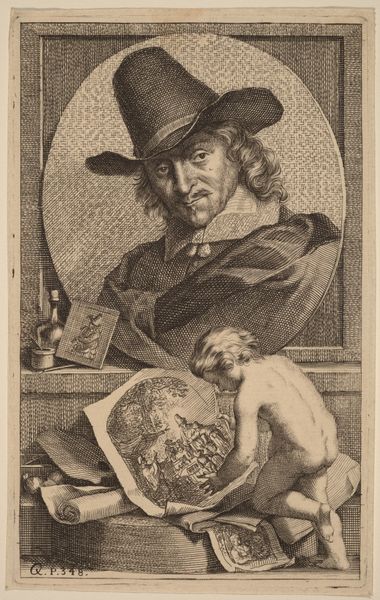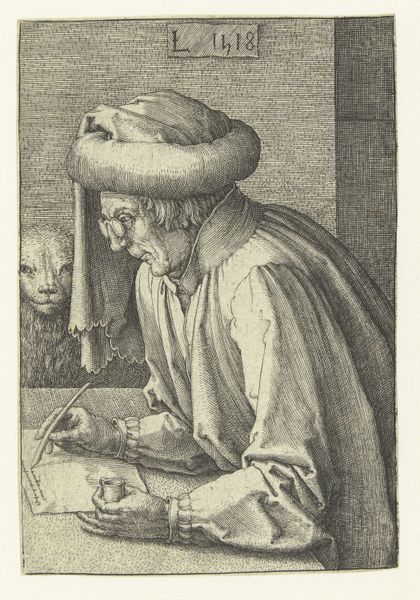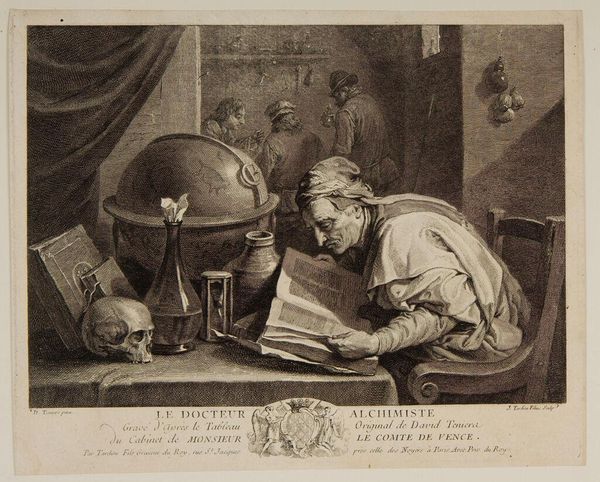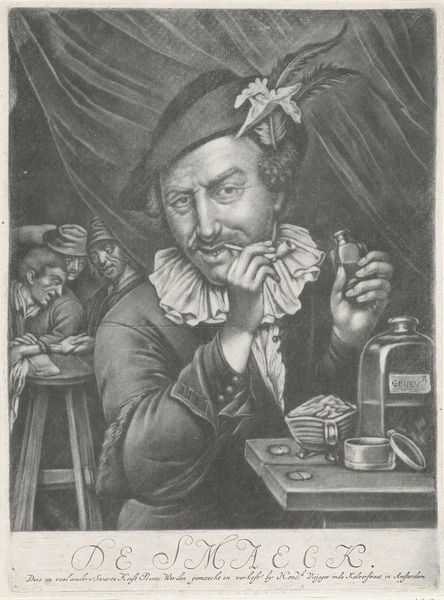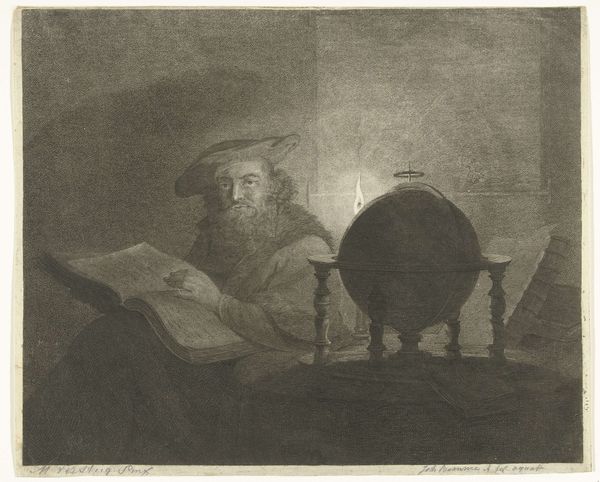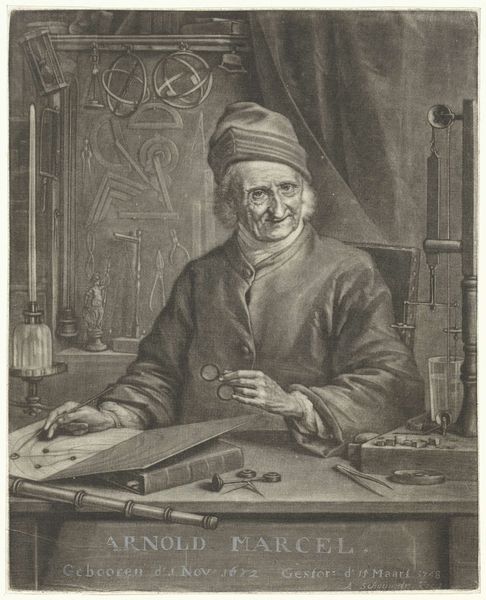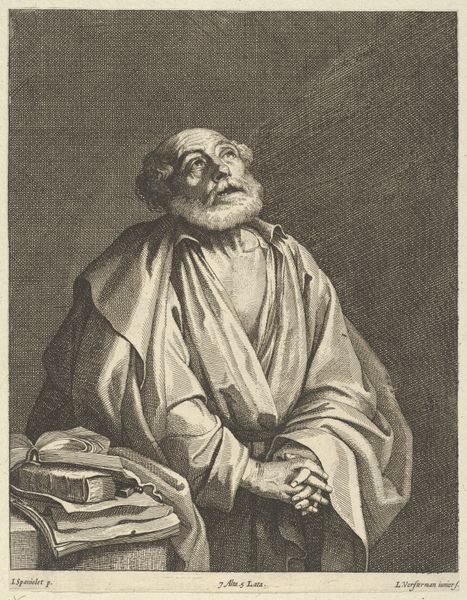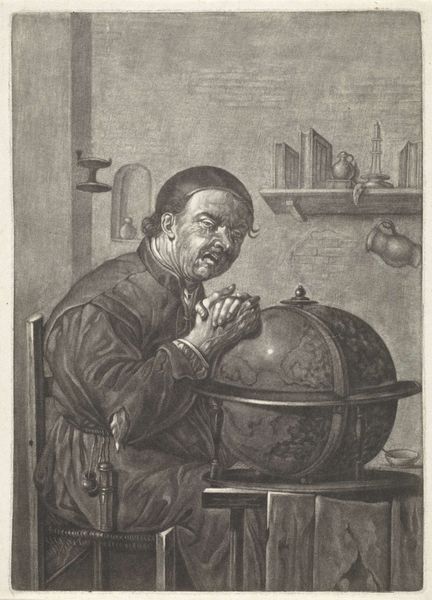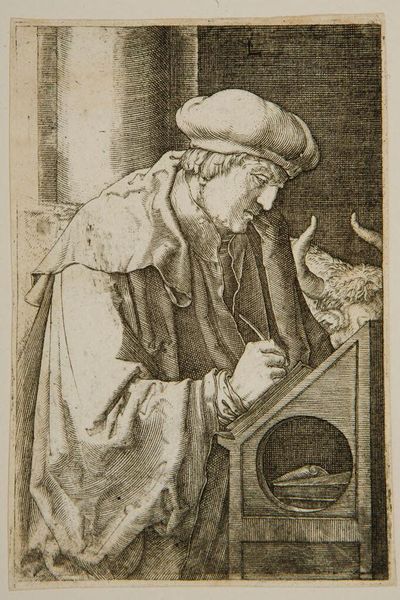
engraving
#
portrait
#
baroque
#
dutch-golden-age
#
portrait reference
#
limited contrast and shading
#
line
#
portrait drawing
#
genre-painting
#
engraving
Dimensions: height 262 , width 188 mm
Copyright: Rijks Museum: Open Domain
Editor: Here we have Jan van der Bruggen's engraving, "Democritus lacht," dating between 1659 and 1726. The laughing philosopher is really captivating! I am wondering about his relationship with knowledge since he is smiling wryly at a globe... How would you interpret this piece in light of Dutch Golden Age societal values? Curator: That's a keen observation! Looking at "Democritus lacht" within its socio-political context, it prompts several thoughts. Consider the Dutch Golden Age – a period of immense mercantile success and scientific discovery, yet also fraught with social stratification and moral debates. What role does laughter play in such a society when looking at intellectual achievement? Editor: Well, it's almost mocking, isn't it? Is Van der Bruggen perhaps poking fun at those obsessed with accumulating geographical knowledge, or maybe commenting on the futility of earthly pursuits amidst the backdrop of religious doctrine and societal expectations? Curator: Precisely! The figure of Democritus, a pre-Socratic philosopher known for his atomic theory and cheerful disposition, serves as a commentary on societal norms. Is Van der Bruggen highlighting the tension between empirical inquiry and philosophical skepticism? Consider who the image was intended for. Editor: Maybe wealthy merchants with burgeoning collections, proud to have knowledge and a globe to prove it! They get to laugh at themselves while looking intellectual and philosophical. Curator: Yes, a form of controlled critique and conspicuous consumption. And note how this image, multiplied through engraving, becomes accessible. This engraving circulated this sentiment throughout the Dutch Republic. Editor: So, this "laughing philosopher" becomes a sort of cultural artifact. This conversation has given me a different way to approach not just this work, but portraiture generally. Thanks! Curator: Indeed, seeing art as enmeshed in networks of power, knowledge, and access is essential. It was a pleasure!
Comments
No comments
Be the first to comment and join the conversation on the ultimate creative platform.
